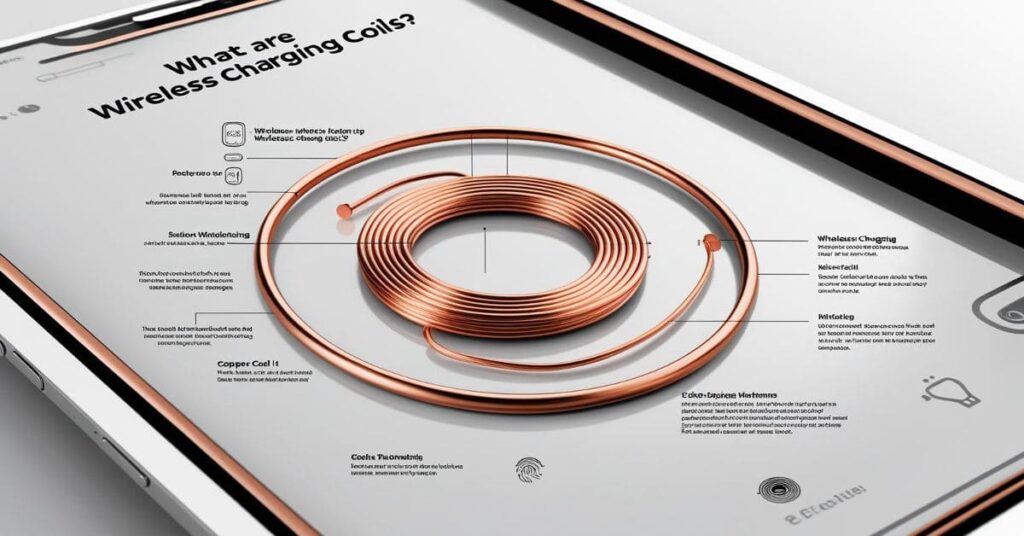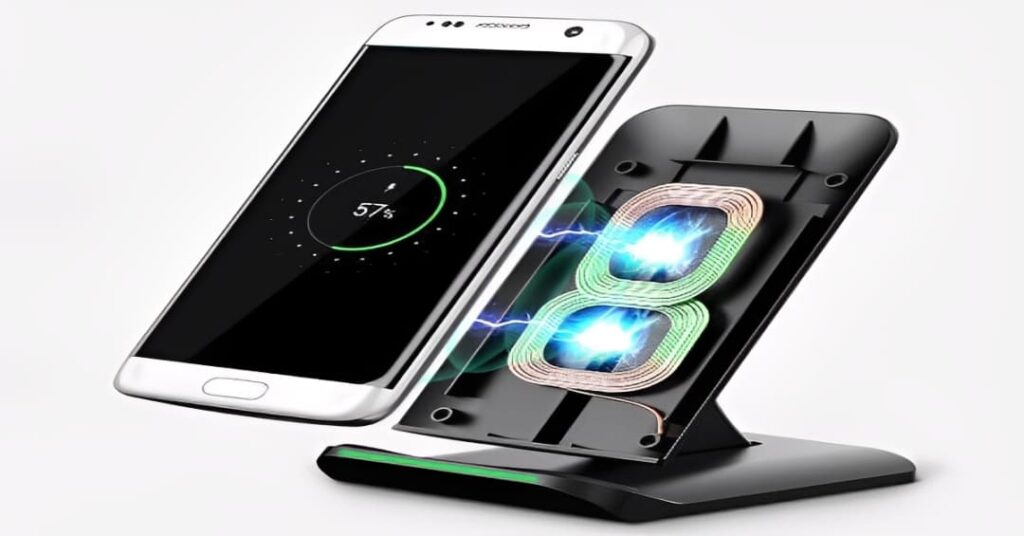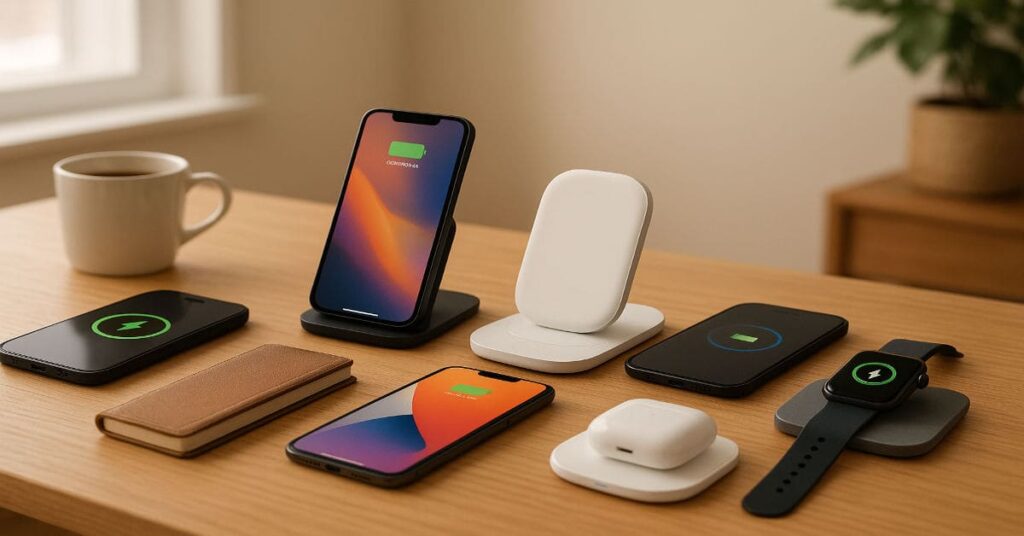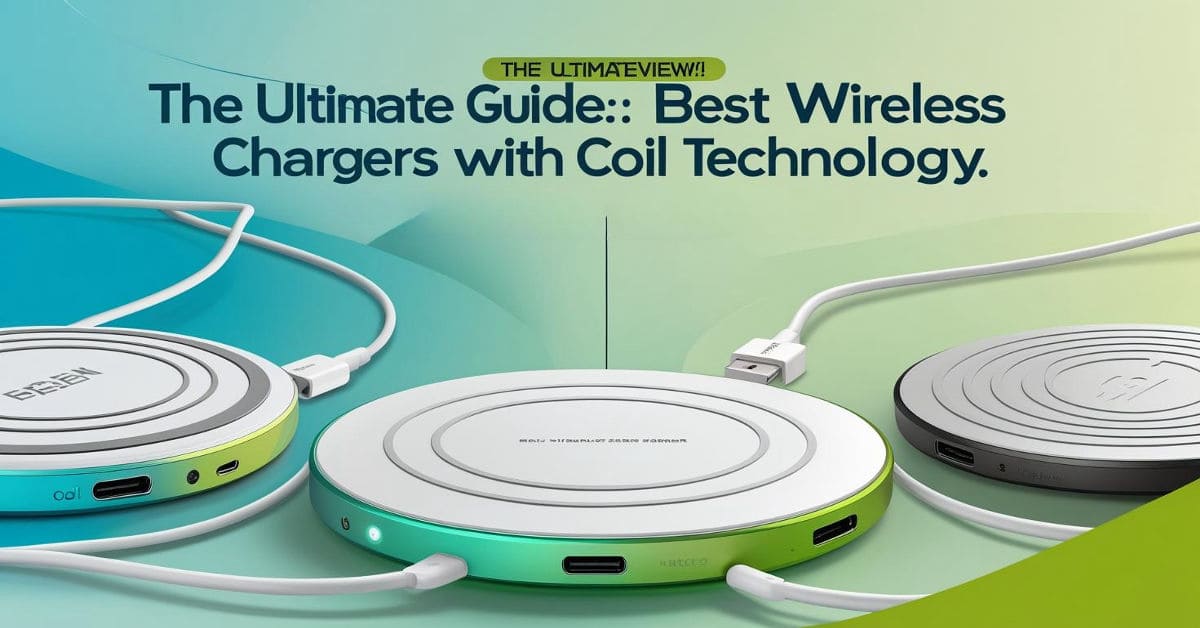Introduction
Text in natural scenes appears in diverse fonts, sizes, and orientations, including skewed, curved, or decorative styles. This variability challenges traditional OCR and CNN-based feature extraction approaches. It’s official—coil wireless chargers are starting to feel like relics from another era. Over the past few years, wireless charging has moved from being a cool novelty to a must-have feature on our desks, nightstands, and even in our cars. And the numbers prove it: adoption rates have skyrocketed, with more devices and accessories supporting the tech than ever before.
Why Coil Wireless Chargers Stand Out
Among the different wireless charging options, coil-based chargers are quickly becoming the go-to choice. Why? Because they tick all the right boxes:
- Convenience on Tap – Drop your phone, earbuds, or smartwatch on the pad—no fumbling with cables, no guessing which side’s “up.”
- Less Wear-and-Tear – Fewer plug-ins mean your charging ports stay pristine for longer.
- Design That Fits Your Life – Sleek, minimalist designs make them look just as good in a modern office as they do on a bedside table.
This evolution isn’t just tech—it’s about smoothing, simplifying, and streamlining our everyday lives.
Table of Contents
WPC QI Wireless Charging Solution
You know that moment when you plop your phone down on a charging pad and—voilà—it just starts charging? No fumbling with cables, no worn-out charging ports. That’s wireless charging magic, and behind much of it is the Wireless Power Consortium’s QI standard. It’s become a quiet but essential part of our daily tech lives, and today we’re unpacking why it matters and what’s possible with it.
1. The Role of the Wireless Power Consortium (WPC) in Standardisation
The WPC acts as the global mediator in wireless charging, ensuring harmony among competing tech standards. Formed in 2008, it brought together tech companies, manufacturers, and innovators to create a universal language for wireless charging.
- Standardisation matters because without it, you’d have a tangled mess of incompatible chargers.
- With WPC’s work, a QI-certified charging pad can power devices from different brands—be it a Samsung Galaxy, an iPhone, or certain earbuds—without any guesswork.
- This consistency makes innovation easier for manufacturers, who can focus on design and features rather than reinventing the wheel for compatibility.
2. Why QI Certification Matters
If WPC is the peacekeeper, QI certification is the handshake everyone agrees on. Here’s why it’s important:
• Compatibility – A QI-certified charger will work seamlessly across thousands of devices without trial-and-error.
• Safety – Certification ensures the charger won’t overheat your phone or send too much power (goodbye battery damage).
• Reliability – You get consistent charging performance, not hit-or-miss connections.
Fun fact: As of 2025, there are over 9,000 QI-certified products on the market—a testament to how trusted this standard has become.
3. Opportunities for Custom Charging Solutions
Here’s where it gets exciting for brands, businesses, and developers—QI tech isn’t just for the big names in consumer electronics.
- Brand differentiation – Imagine a coffee shop table with built-in QI chargers, many featuring the latest Coil Wireless Charger technology. Customers linger longer, and your brand becomes associated with convenience.
- Event experiences – Conferences can offer branded wireless charging spots, blending utility with subtle marketing.
- Product integration – Furniture companies are embedding QI pads into nightstands, desks, and even kitchen counters.
Case in point: A boutique hotel chain integrated QI chargers into bedside tables, and guest satisfaction scores around room amenities jumped by 25%.
What Are Wireless Charging Coils?

If you’ve ever placed your phone on a charging pad and wondered, “How is this thing powering up without a cable?”, the secret lies in something called wireless charging coils. These coils are like the hidden messengers that move energy from the charger to your device, without physical contact.
Let’s break it down so it’s easy to follow.
1. Basics of Electromagnetic Induction
Wireless charging uses a principle called electromagnetic induction. Sounds fancy, but here’s a simple analogy:
Imagine two hula hoops — one connected to a power source (the charger), and the other inside your phone. As current moves through the charger’s coiled loop, it generates a hidden magnetic force—wireless power’s silent magic. Your phone’s coil catches this field and turns it back into electricity to power your battery.
Key points in plain English:
- The charger’s coil is like a transmitter.
- The phone’s coil is like a receiver.
- They ‘talk’ via magnetic field, no wires.
💡 Actionable Tip: When buying a wireless charger, check if your phone supports the same charging standard (like Qi or Qi2). Without compatibility, the coils can’t “speak” correctly, and charging will be slow or won’t happen at all.
2. Coil Configurations: Single-Coil vs. Multi-Coil
Not all wireless chargers are built the same. The way coils are arranged changes how easy and efficient charging feels.
Single-Coil Chargers
- It has just one coil inside.
- You need to place your phone exactly in the right spot for charging to start.
- Usually cheaper, but more “fussy” about positioning.
Multi-Coil Chargers
- Contain two or more coils.
- Give you more freedom to place your phone without perfect alignment.
- Better for devices like earbuds and smartwatches that have smaller charging areas.
Efficiency difference: Multi-coil setups often waste a little more energy as heat, but they’re way more forgiving for daily use.
💡 My advice to you is: If you tend to toss your phone on the charger without thinking, invest in a multi-coil charger for less frustration. If you’re fine with careful placement, a single-coil model can save you money.
3. Material Choices for Charging Coils
Coils are usually made from metals that conduct electricity well. The most common choices are copper and, in some budget models, aluminium.
Copper Coils
- Excellent conductor — transfers energy efficiently.
- Supports faster charging with less heat buildup.
- Usually found in higher-quality chargers.
Aluminum Coils
- Cheaper to produce, but less efficient than copper.
- Can lead to slower charging and slightly more heat.
- Often found in entry-level wireless chargers.
Why heat matters: Excess heat can reduce charging speed and, over time, affect your phone’s battery health.
💡 My advice to you is: If you want fast, efficient charging, look for chargers that specifically advertise copper coils. They may cost a little more, but are worth it for performance and battery longevity.
Wrapping It Up
Wireless charging coils might be hidden inside your devices, but they’re the unsung heroes of cable-free power. Whether it’s the science of magnetic fields, the convenience of multi-coil setups, or the efficiency of copper, knowing the basics can help you choose a charger that fits your needs.
If you remember nothing else, remember this:
- Compatibility is key.
- Multi-coil = convenience.
- Copper = speed and efficiency.
Discover Superior Wireless Charging with WirelessChargingCoil.com
In today’s fast-paced world, convenience and efficiency are key, especially when it comes to keeping our devices powered up and ready to go. WirelessChargingCoil.com stands out as a leader in wireless charging technology, offering innovative solutions that combine speed, safety, style, and versatility. Whether you’re charging a smartphone, earbuds, or wearable tech, their wireless chargers deliver an exceptional user experience that sets them apart from the competition.
Why Choose WirelessChargingCoil.com?
When it comes to wireless charging, not all solutions are created equal. WirelessChargingCoil.com understands the diverse needs of modern tech users and has engineered chargers that excel in performance and design. Their commitment to quality and customer satisfaction is evident in every product, making them the trusted choice for fast, safe, and stylish wireless charging.
Features of Our Wireless Charging Solution
High-Speed Charging Capabilities
WirelessChargingCoil.com’s chargers are designed to provide rapid and efficient power delivery across a wide range of devices. Utilising cutting-edge Coil Wireless Charger technology and optimised power management, these chargers significantly reduce the time needed to recharge your smartphone or wearable. Whether you’re topping up your phone between meetings or charging multiple devices at home, expect fast, consistent power without the hassle of cords.
Temperature Control and Overcharge Protection
Safety is a priority with every charger from WirelessChargingCoil.com. Their advanced temperature regulation systems monitor device heat levels to prevent overheating, which can damage your device’s battery and reduce its lifespan. Additionally, built-in overcharge protection ensures your devices receive just the right amount of power, automatically cutting off charging once your battery is full. This dual-layer protection safeguards your valuable electronics, providing peace of mind every time you charge.
Slim, Aesthetic Design Options
Beyond functionality, WirelessChargingCoil.com offers wireless chargers that complement your lifestyle and space. The sleek, minimalistic designs are crafted to blend seamlessly into any environment, from your office desk to your bedside table. Their slim profiles take up minimal space while adding a touch of modern elegance, proving that power solutions can be both practical and beautiful.
Wide Device Compatibility
One of the standout advantages of WirelessChargingCoil.com’s products is their broad compatibility. Their wireless chargers support all Qi-enabled devices, including the latest smartphones, wireless earbuds, and various wearable tech. This universal approach means you don’t need multiple chargers cluttering your space — a single, versatile charger is enough to keep all your devices powered up efficiently.
Top 7 Coil Wireless Charger Picks

Wireless charging has come a long way, and picking the right charger can make a big difference in your daily convenience. To help you out, I’ve rounded up seven of the best coil wireless chargers that combine style, speed, and reliability. Whether you want a sleek desk charger or a powerful fast-charger for your phone, this list has something for you. Let’s dive in!
1. Anker PowerWave Pad Qi-Certified Wireless Charger
Why it stands out:
Anker is a trusted name in charging tech, and their PowerWave Pad is no exception. It’s simple, affordable, and reliable — perfect if you want a no-fuss charger that gets the job done.
Tech specs & charging speed:
- Output: Up to 10W for Android, 7.5W for iPhones
- Compatibility: Qi-enabled devices, including Samsung, Apple, Google Pixel
- Dimensions: Compact, lightweight design
Pros:
- Solid charging speed for the price
- Non-slip surface keeps your phone stable
- Overcharge and temperature protection
Cons:
- No fast charge for iPhone 12 and above (limited to 7.5W)
- Lacks a built-in fan so that it can get a bit warm
Price range: $9.99 – $19.99
2. Samsung Wireless Charger Duo Pad
Why it stands out:
If you’re deep in the Samsung ecosystem, this charger is a game-changer. It can charge your phone and Galaxy Watch simultaneously, making it perfect for multitaskers.
Tech specs & charging speed:
- Phone charging up to 15W
- Wireless PowerShare is compatible with other devices
- Two charging coils for wide device placement
Pros:
- Dual charging capability
- Sleek design with LED indicators
- Fast charging is supported for compatible Samsung phones
Cons:
- Pricier than single-device chargers
- Bulkier, takes up more desk space
Price range: $70 – $85
Buy on Samsung’s Official Site
3. Belkin Boost Up Wireless Charging Stand
Why it stands out:
This charger lets you prop your phone up while it juices up — perfect for those who like to watch videos or FaceTime hands-free while charging.
Tech specs & charging speed:
- Output: 10W for Android, 7.5W for iPhones
- Supports devices up to 10W wireless charging
- Includes LED charging status indicator
Pros:
- Convenient stand design
- Stable charging without overheating
- Great build quality
Cons:
- Slightly more expensive for a basic stand
- No USB-C cable included
Price range: $34 – $50
4. CHOETECH Wireless Charger, Qi-Certified 15W Fast Charging Pad
Why it stands out:
If you want to maximise charging speed without breaking the bank, this CHOETECH pad is a solid pick. It’s fast, budget-friendly, and compatible with a wide range of devices.
Tech specs & charging speed:
- Output: Up to 15W fast charging
- Compatible with all Qi-enabled phones
- Anti-slip design with LED indicator
Pros:
- Great fast charge speed for the price
- Compact and travel-friendly
- Safety features include temperature control
Cons:
- Build quality isn’t as premium
- No stand option
Price range: $18 – $25
5. Nomad Base Station Mini
Why it stands out:
For those who value aesthetics and quality, Nomad offers a wireless charger that looks as good as it performs, with a leather top and minimalist design.
Tech specs & charging speed:
- Output: Up to 10W wireless charging
- Compatible with Qi-enabled devices
- Single-coil charging surface
Pros:
- Premium build with leather finish
- Compact and stylish
- Simple to use
Cons:
- Charging speed capped at 10W
- Higher price point for a single-coil charger
Price range: $60 – $79
6. Spigen Wireless Charger Stand, 10W Fast Charge
Why it stands out:
Spigen is known for phone cases, but their wireless charger is just as reliable. The stand design lets you charge vertically or horizontally, handy for all types of phone use.
Tech specs & charging speed:
- Supports 10W fast charging
- Qi-certified for all compatible devices
- Dual coil for better phone placement
Pros:
- Versatile stand orientation
- Compact and lightweight
- Good value for the build quality
Cons:
- No advanced cooling system
- Cable is not USB-C
Price range: $25 – $30
7. Mophie 3-in-1 Wireless Charging Pad
Why it stands out:
Need to charge your iPhone, AirPods, and Apple Watch all at once? Mophie’s 3-in-1 pad is designed specifically for Apple users who want a one-stop charging station.
Tech specs & charging speed:
- iPhone charging up to 7.5W
- Separate coils for AirPods and Apple Watch
- Sleek, space-saving design
Pros:
- All-in-one Apple device charging
- Clean cable management
- High-quality finish
Cons:
- Expensive compared to single chargers
- Limited fast charging for iPhones
Price range: $140 – $160
Final Tips for Choosing Your Coil Wireless Charger
When picking a wireless charger, think about what fits your daily routine best: Do you need a stand for video calls? Are you charging multiple devices? How important is speed versus style? Also, keep in mind that charging speeds can vary depending on your phone model and charger compatibility. Lastly, always use a quality charging adapter with your wireless pad for the best results.
Ready to ditch cables and go wireless? These picks will keep your devices powered up with ease and style!
Additional Considerations
Choosing the right wireless charger isn’t just about grabbing the coolest-looking gadget on the shelf. It’s about matching your device, budget, and daily habits to what’s available—and knowing a bit about what’s coming next can keep you ahead of the curve. Let’s break it down so you can make a wise choice without getting overwhelmed.
Picking a Charger That Fits Your Device and Lifestyle

First things first: your device matters. Some wireless chargers work best with specific phone brands or models, so double-check compatibility before buying. For example, Apple’s MagSafe chargers are tailored for iPhones, while many Android devices support the Qi wireless charging standard.
Next, think about how you use your device daily. Are you mostly at a desk or always on the go? If you’re a traveller or commute often, a compact, portable charger might be your best friend. But if you prefer a “set it and forget it” style, a stylish stand or pad for your nightstand or office desk could be perfect.
And, of course, budget plays a role. Wireless chargers can range from super affordable basic pads to higher-end models packed with extra features. Decide what you need before splurging—sometimes, simple does the job just fine.
What Matters: Speed, Coils, and Portability
Charging speed is a huge deal. Wireless charging is typically slower than plugging in a cable, but some chargers are faster than others. Look for chargers that support your device’s max charging wattage. If your phone can handle 15W fast charging, but the charger only outputs 5W, you’ll end up waiting longer than necessary.
Coil arrangement might sound technical, but it’s worth a glance. Chargers with multiple coils or larger coil areas mean you don’t have to fuss over perfect placement. This flexibility can save a lot of frustration, especially if you’re often grabbing your phone mid-charge.
Portability is more than just size. Consider chargers with foldable designs or wireless power banks if you need power away from outlets. Lightweight and durable chargers suit travel, while heavier, feature-rich models are better for your home setup.
Looking Ahead: The Future of Wireless Charging
Wireless charging technology is evolving fast. One exciting trend is long-range charging, which aims to power devices without needing to rest them on a pad. Imagine walking around your room with your phone charging in your pocket, no wires, no fuss. It’s still in development, but could be mainstream in the next few years.
Another incredible innovation is integrating chargers directly into furniture. Think desks, lamps, or even kitchen counters with built-in wireless charging zones. This means less clutter and more seamless charging experiences right where you live and work.
Keeping an eye on these trends can help you future-proof your purchase, so you won’t feel the need to upgrade too soon.
Conclusion
Alright, let’s wrap things up with a quick look back at what we’ve covered. We’ve talked about how coil chargers aren’t just a neat gadget—they’re a game-changer when it comes to making your charging life easier and more efficient. From the smooth wireless experience to cutting down on those annoying cable tangles, coil chargers bring convenience and style to your daily routine. Plus, they’re usually pretty versatile, fitting with a bunch of devices without needing different cords cluttering up your space.
If you haven’t already, I recommend giving a coil wireless charger a try. It’s one of those little upgrades that feels like a small change but ends up making a big difference. Whether you’re charging your phone at your desk, bedside, or even on the go, having that wireless freedom is honestly a bit addictive once you get used to it. Just make sure you pick one that matches your device’s specs so you get the fastest, safest charge possible.
And hey, I’d love to hear from you! Do you have a favourite charger that’s made your life easier? Or maybe you’ve tried a coil charger before—how did it go? Drop a comment below and share your thoughts, tips, or even questions. It’s always great to learn from others’ experiences and discover new gear worth checking out.
FAQs
What is a wireless charging coil?
A wireless charging coil is a circular metal loop inside the charger. This coil uses electromagnetic induction to transfer power from the charger to the phone, without any cable. Simply put, the charger’s coil is the “power-sending transmitter,” and the phone’s coil is the “power-receiving receiver.”
How can the coil in the wireless charger charge a smartphone?
When you place your Qi-compatible smartphone on a wireless charging pad, the charger’s coil creates a magnetic field. The phone’s coil “catches” this field and converts it into electricity that charges the battery. This process is completely contactless, so there’s no need to plug in or connect any cables.
What is a coil charger?
A coil charger is a type of wireless charger that uses one or multiple charging coils to charge devices. Single-coil chargers are cheaper but require the phone to be positioned correctly, whereas multi-coil chargers are more flexible and less sensitive to positioning.
How do I check if my phone is Qi-enabled?
Search your phone model and check the specifications section to see if “Qi wireless charging” is supported. Usually, iPhones (from iPhone 8 onward) and flagship Android phones are Qi-enabled. You can also check your phone’s manual or the official brand website.
Discover more from Snap Charge Hub
Subscribe to get the latest posts sent to your email.
